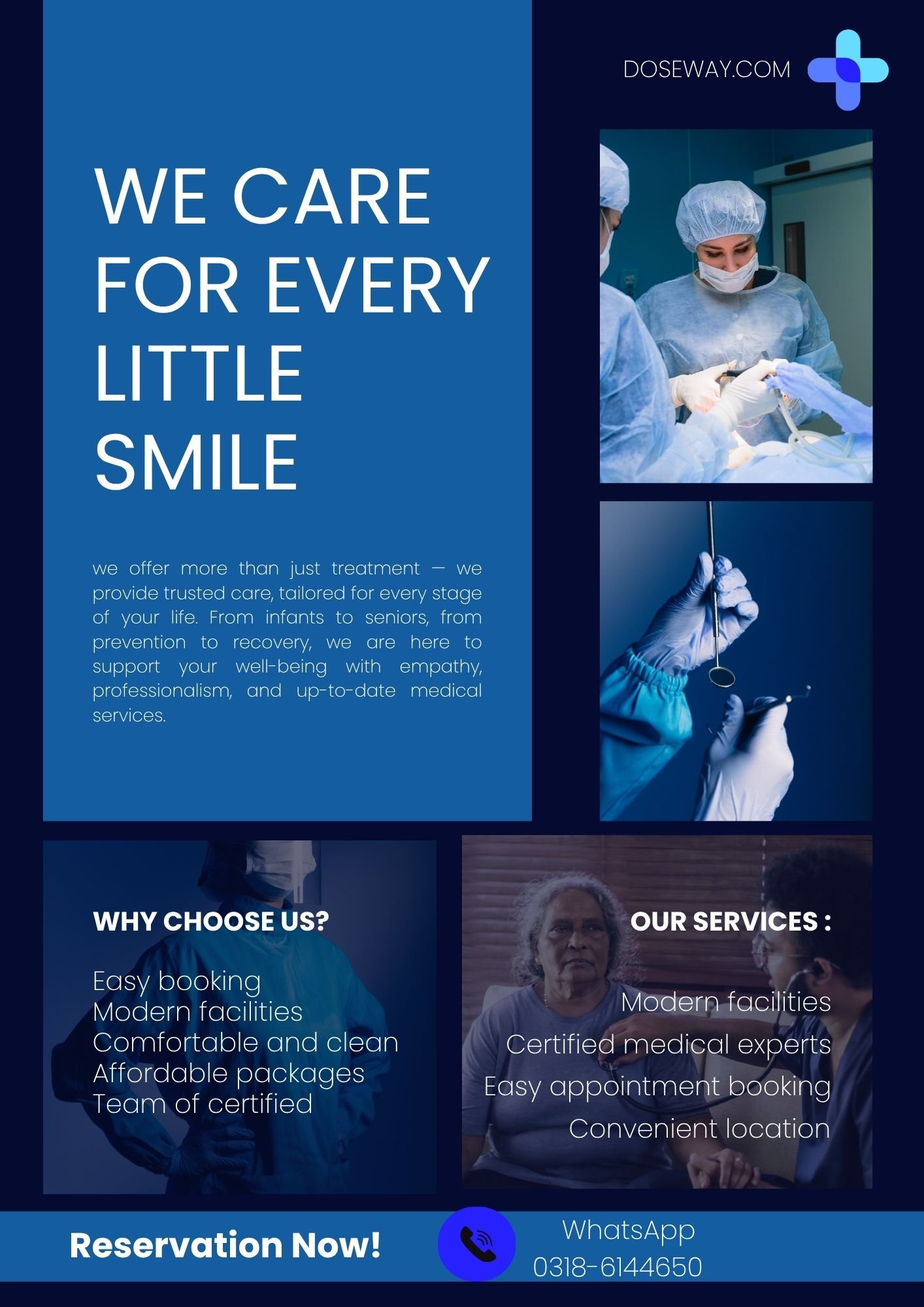A tummy tuck, medically known as abdominoplasty, is a transformative surgical procedure that removes excess skin and fat while restoring weakened muscles to create a smoother, firmer abdominal profile. The recovery journey following this procedure is crucial for achieving optimal results and requires careful planning, patience, and proper postoperative care. Understanding what to expect during each healing phase can significantly impact your comfort, safety, and final outcome.
What You’ll Learn From This Comprehensive Guide:
- 📋 Step-by-step tummy tuck recovery timeline from day one to full healing
- ⚠️ Potential risks and complications and how to prevent them
- 💰 Cost factors and financial planning for your procedure
- 🏥 Pre-operative preparation strategies for smoother recovery
- 🍎 Nutrition and lifestyle adjustments for optimal healing
- 🏃♂️ Activity progression and exercise recommendations
- 📊 How to use our recovery calculator for personalized planning
Tummy Tuck Recovery Planner
Calculate your recovery timeline, risks, and costs
Disclaimer: This calculator provides estimates only and is not a substitute for professional medical advice. Consult with a qualified plastic surgeon for personalized assessment.
Your Surgical Risk Assessment
Recovery Timeline
Risk Factors
Cost Estimate
Recommendations
Read More Guides & Try More Free Tools:
- Try our Light Lip Filler: Subtle Hyaluronic Acid Enhancement
- Try our Endoscopic Forehead Lift: Minimally Invasive Brow Lift
- Try our Calf Augmentation: Implants And Fat Transfer

Table Of Contents
What is a Tummy Tuck and What Does the Recovery Process Entail?
A tummy tuck, or abdominoplasty, is a surgical procedure designed to remove excess skin and fat from the abdomen while tightening weakened or separated abdominal muscles. The recovery process involves multiple stages of healing, each with specific characteristics, challenges, and care requirements. Understanding this journey is essential for setting realistic expectations and achieving the best possible outcomes from your cosmetic surgery investment.
The abdominoplasty recovery timeline typically spans several months, with the most dramatic changes occurring within the first six weeks. During this period, patients progress from initial healing with drainage tubes and compression garments to gradually resuming normal activities and eventually returning to full exercise routines. The complete healing process, including scar maturation and final settling of results, can take up to a year or longer.
Key Stages of Tummy Tuck Recovery
- 🩹 Immediate postoperative phase (first 72 hours)
- 📅 First two weeks with drains and limited mobility
- 🔄 Weeks 3-6 with gradual activity increase
- 💪 Months 2-3 with return to most normal activities
- 🕒 Months 6-12 for final results and scar maturation
What Are the Different Types of Tummy Tuck Procedures and How Do They Affect Recovery?
The type of abdominoplasty procedure performed significantly influences the recovery timeline, intensity of postoperative symptoms, and duration of healing. Understanding these variations helps patients prepare appropriately for their specific surgical experience and set realistic expectations for their personal recovery journey.
Mini Tummy Tuck Recovery
A mini abdominoplasty addresses concerns below the navel with a smaller incision and typically no umbilical relocation. Recovery is generally quicker with most patients returning to light activities within 1-2 weeks and full activities within 3-4 weeks. This procedure involves less tissue manipulation and muscle repair, resulting in reduced postoperative discomfort and shorter healing duration.
Standard Tummy Tuck Recovery
The standard tummy tuck addresses both upper and lower abdomen with muscle repair and umbilical repositioning. Patients typically require 2-3 weeks before returning to sedentary work and 6-8 weeks before resuming strenuous activities. This more extensive procedure involves longer incisions, significant muscle manipulation, and more tissue rearrangement, necessitating a more comprehensive recovery period.
Extended Tummy Tuck Recovery
Extended abdominoplasty addresses the abdomen, flanks, and lower back, requiring more extensive tissue removal and longer incisions. Recovery typically involves 3-4 weeks before returning to desk work and 8-10 weeks before light exercise. The broader surgical area results in more postoperative discomfort and a longer initial recovery phase compared to standard procedures.
Fleur-de-Lis Tummy Tuck Recovery
The Fleur-de-Lis technique addresses significant horizontal and vertical excess skin, creating a T-shaped scar pattern. This most extensive variation requires the longest recovery, with patients often needing 4-6 weeks before returning to sedentary work and 3-4 months before resuming full exercise routines. The additional vertical incision increases healing demands and postoperative care requirements.
What Does the Immediate Postoperative Period After Abdominoplasty Involve?
The first 24-72 hours following tummy tuck surgery represent the most critical phase of recovery, requiring careful monitoring, pain management, and specific positioning to ensure optimal healing and minimize complications. This period sets the foundation for the entire recovery journey and demands strict adherence to postoperative instructions.
During the immediate recovery phase, patients typically experience grogginess from anesthesia, significant abdominal tightness, moderate to severe pain manageable with medication, and limited mobility requiring assistance. Surgical drains collect fluid from the surgical site, compression garments provide support and reduce swelling, and specific positioning recommendations help manage discomfort and promote proper healing.
Essential Immediate Postoperative Care Measures
- 🩸 Monitoring drain output and surgical sites
- 💊 Timely pain medication administration
- 🚶 Assisted ambulation to prevent blood clots
- 💧 Adequate hydration and nutrition
- 🛏️ Proper positioning with back and knee support
- 🌬️ Deep breathing exercises to maintain lung function
What is the Week-by-Week Tummy Tuck Recovery Timeline?

Understanding the typical week-by-week progression of tummy tuck recovery helps patients monitor their healing, recognize potential complications early, and maintain realistic expectations throughout their postoperative journey. While individual experiences vary based on multiple factors, most patients follow a predictable pattern of improvement.
Week 1: Initial Healing Phase
The first week focuses on pain management, initial healing, and gradual mobility restoration. Patients typically have surgical drains in place, wear compression garments continuously, and require assistance with daily activities. Swelling and bruising peak around days 3-5, and discomfort is most significant during this period.
Week 2: Transition Phase
During the second week, many patients have drains removed, experience reduced pain requiring less medication, and can perform light activities independently. Swelling gradually decreases, but abdominal tightness and temporary posture changes persist as healing continues.
Weeks 3-4: Increasing Activity
Most patients return to sedentary work during this period, gradually increase walking distance and duration, and may begin driving if not taking narcotic pain medication. Noticeable improvement in energy levels occurs, though swelling still fluctuates throughout the day.
Weeks 5-8: Continued Improvement
This phase typically involves resuming most daily activities, beginning light upper body exercises, and observing continued reduction in swelling. Compression garment use may transition to part-time, and incisions continue to mature with appropriate scar care.
Months 3-6: Nearing Final Results
Patients typically resume all exercises including core work, observe significant scar fading and flattening, and experience near-final abdominal contour as swelling substantially resolves. Garment use usually concludes unless recommended for specific concerns.
Months 6-12: Final Healing
The final healing phase involves complete scar maturation, stabilization of abdominal contour, and resolution of residual swelling or numbness. Final surgical results become fully apparent during this period.

What Factors Influence Your Personal Tummy Tuck Recovery Timeline?
Multiple individual factors significantly impact the duration and experience of tummy tuck recovery, explaining why healing timelines vary considerably between patients. Understanding these variables helps establish realistic expectations and implement strategies to optimize your personal recovery journey.
Surgical Technique and Extent
The specific abdominoplasty technique performed directly influences recovery demands. More extensive procedures involving muscle repair, larger tissue removal, or additional areas addressed naturally require longer healing periods and more comprehensive postoperative care.
Patient Age and Overall Health
Younger patients typically experience faster healing due to better tissue elasticity and regenerative capacity. Underlying health conditions such as diabetes, immune disorders, or circulatory issues can significantly impact recovery speed and complication risks.
Lifestyle Factors
Non-smokers heal considerably faster than smokers, as nicotine constricts blood vessels and reduces oxygen delivery to healing tissues. Regular physical fitness before surgery correlates with smoother recovery, while obesity or sedentary lifestyles may prolong healing.
Nutritional Status
Adequate protein intake, proper hydration, and sufficient micronutrients directly support tissue repair and immune function. Patients with nutritional deficiencies typically experience delayed healing and increased complication risks.
Surgical Skill and Technique
Experienced board-certified plastic surgeons utilizing refined techniques typically create less tissue trauma, resulting in more comfortable recoveries with reduced swelling and faster initial healing.
Compliance with Postoperative Instructions
Patients who meticulously follow all postoperative recommendations regarding activity restrictions, garment use, wound care, and medication protocols typically experience smoother recoveries with fewer complications.
What Are the Most Common Tummy Tuck Complications and How Can You Prevent Them?
Understanding potential abdominoplasty complications empowers patients to recognize warning signs early and implement preventive strategies throughout their recovery journey. While serious complications are uncommon with proper surgical technique and postoperative care, awareness promotes proactive management.
Hematoma and Seroma Formation
Blood collection (hematoma) or clear fluid accumulation (seroma) represents the most common complications, occurring in approximately 5-15% of patients. Preventive measures include proper drain management, consistent compression garment use, and gradual activity resumption.
Infection Risks
Surgical site infections occur in 1-3% of cases and typically present with increasing redness, warmth, pain, or purulent drainage. Prevention strategies include proper wound care, antibiotic protocols, and meticulous hygiene practices.
Poor Wound Healing
Compromised healing, particularly at T-junctions or in smokers, may result in wound separation or delayed closure. Preventive approaches include smoking cessation, optimal nutrition, and careful activity modification to reduce tension on incisions.
Blood Clot Development
Deep vein thrombosis (DVT) and pulmonary embolism (PE) represent potentially life-threatening complications. Prevention includes early ambulation, hydration, compression devices, and in high-risk cases, blood-thinning medications.
Sensory Changes
Temporary or permanent numbness in the abdominal skin is expected after tummy tuck due to nerve interruption. Most sensation gradually returns over 6-12 months, though some areas may experience permanent changes.
Scarring Concerns
All abdominoplasty procedures create permanent scars, though quality varies based on genetics, surgical technique, and postoperative care. Strategic incision placement, proper wound care, and scar management protocols optimize appearance.

How Can You Prepare Your Home for Optimal Tummy Tuck Recovery?
Strategic home preparation before abdominoplasty surgery significantly enhances comfort, safety, and healing efficiency during the initial recovery weeks. Creating an optimal recovery environment reduces physical strain and supports adherence to postoperative restrictions.
Recovery Area Setup
Designate a primary recovery space with easy access to necessities, multiple pillows for positioning, and entertainment options. Essential items should remain within arm’s reach to minimize unnecessary movement during initial healing.
Essential Supplies Checklist
- 📋 Medications and wound care supplies
- 🥤 Water bottles and nutritious snacks
- 📱 Charging cables and entertainment
- 🛏️ Extra pillows for positioning
- 👚 Front-opening clothing and slip-on shoes
- 🚽 Raised toilet seat if needed
- 🪑 Firm pillows for car transportation
Kitchen Preparation
Prepare and freeze nutritious meals in individual portions, stock easy-to-prepare foods requiring minimal effort, and ensure adequate hydration supplies. Consider protein shakes, soups, and other easily digestible options for initial recovery days.
Safety Modifications
Remove tripping hazards, install night lights in pathways to bathrooms, place frequently used items at waist level to avoid bending, and arrange temporary sleeping arrangements on ground floor if bedrooms are upstairs.
Support System Coordination
Arrange help for childcare, pet care, meal preparation, and transportation during the initial two weeks. Establish clear communication plans with your support network and surgeon’s office for seamless assistance.
What Nutrition Supports Optimal Tummy Tuck Recovery?
Proper nutrition significantly influences healing speed, comfort levels, and final surgical outcomes following abdominoplasty. Implementing targeted nutritional strategies before and after surgery provides essential building blocks for tissue repair and reduces complication risks.
Protein Requirements for Healing
Adequate protein intake is crucial for wound healing, immune function, and tissue regeneration. Aim for 1.2-1.5 grams of protein per kilogram of body weight daily from sources like lean meats, fish, eggs, dairy, legumes, and protein supplements.
Hydration Essentials
Proper hydration maintains tissue perfusion, supports nutrient delivery, and helps flush anesthesia medications and byproducts. Consume 2-3 liters of fluid daily, primarily from water, with electrolytes from broth or sports drinks if needed.
Key Micronutrients for Recovery
- Vitamin C: Supports collagen production and immune function
- Zinc: Essential for wound healing and protein synthesis
- Vitamin A: Promotes epithelialization and immune response
- Iron: Supports oxygen transport to healing tissues
- B vitamins: Aid energy production and cellular repair

Foods to Emphasize During Recovery
- 🥦 Lean proteins for tissue repair
- 🍓 Colorful fruits and vegetables for antioxidants
- 🥑 Healthy fats for inflammation modulation
- 🌾 Whole grains for sustained energy
- 💧 Hydrating foods like soups and smoothies
Foods and Substances to Avoid
- 🚫 Excessive sodium promoting swelling
- 🚫 Sugar impairing immune function
- 🚫 Alcohol interfering with healing and medications
- 🚫 Processed foods with limited nutritional value
- 🚫 Caffeine in excess contributing to dehydration
What is the Role of Compression Garments in Tummy Tuck Recovery?
Medical-grade compression garments serve multiple crucial functions in abdominoplasty recovery, significantly impacting comfort, healing efficiency, and final results. Understanding their importance promotes consistent wear according to surgeon recommendations.
Benefits of Postoperative Compression
Compression garments minimize swelling by supporting lymphatic drainage, reduce seroma risk by eliminating dead space, provide support to healing tissues, improve comfort during movement, and help skin redrape smoothly to new contours.
Garment Selection Criteria
Optimal compression garments feature medical-grade materials, flat seams to prevent skin irritation, appropriate compression level for healing stage, and correct sizing for individual anatomy. Stage 1 garments provide higher compression immediately postoperative, while Stage 2 garments offer moderate compression for later healing.
Wearing Schedule Guidelines
Most surgeons recommend 23-24 hour daily wear for the first 2-4 weeks, transitioning to 12-hour wear for an additional 2-4 weeks. Specific protocols vary based on surgical extent, healing progress, and individual patient factors.
Garment Care and Maintenance
Proper care includes having a second garment for changes during washing, following manufacturer cleaning instructions, ensuring complete drying before reuse, and monitoring for stretched-out areas requiring replacement.
How Does Our Tummy Tuck Recovery Calculator Work?
Our comprehensive tummy tuck recovery calculator utilizes advanced algorithms incorporating multiple patient and surgical factors to generate personalized recovery timelines, risk assessments, and cost estimates. This sophisticated tool transforms general recovery information into actionable, individualized guidance.
Input Parameters and Data Collection
The calculator processes demographic information including age, gender, height, and weight to establish baseline healing capacity. Medical history factors such as existing conditions, medications, lifestyle habits, and previous surgeries further refine predictions.
Surgical details including procedure type, anesthesia approach, surgeon experience, and facility type significantly influence recovery projections. Combined, these data points create a multidimensional profile for accurate personalized estimation.
Algorithmic Processing Methodology
Proprietary algorithms weight each input factor according to established medical literature and clinical outcomes data. The system cross-references thousands of data points to identify patterns and correlations that inform recovery predictions.
Risk assessment calculations incorporate evidence-based medicine principles, assigning values to modifiable and non-modifiable risk factors to generate complication probability estimates. Cost calculations factor in geographic variations, procedure complexity, and facility fee structures.
Output Interpretation and Application
The calculator generates multiple output categories including personalized recovery timeline with stage-specific milestones, complication risk assessment with prevention strategies, cost estimation with breakdown of fee components, and customized recommendations for optimal recovery.
What Do the Results from the Tummy Tuck Recovery Calculator Mean?
Understanding how to interpret calculator outputs empowers patients to make informed decisions, implement appropriate preparations, and establish realistic expectations for their abdominoplasty journey. Each results category provides specific, actionable information.
Recovery Timeline Interpretation
The personalized timeline indicates expected milestones rather than guaranteed dates, accounting for individual healing variations. This projection helps coordinate time off work, arrange assistance, and monitor personal progress against typical patterns.
Risk Assessment Understanding
Risk percentages reflect probability estimates based on statistical modeling of similar patient profiles. These calculations highlight modifiable risk factors and provide targeted strategies for risk reduction through preoperative optimization and postoperative compliance.
Cost Estimate Components
Detailed cost breakdowns help patients understand fee structures, plan financially, and compare surgeon quotes effectively. Estimates include surgeon fees, anesthesia costs, facility charges, and ancillary expenses for comprehensive budgeting.
Personalized Recommendations Value
Customized suggestions address specific patient factors identified through the assessment process. These evidence-based recommendations target individual opportunities for optimizing safety, comfort, and final results throughout the recovery journey.
How Can You Optimize Your Tummy Tuck Recovery for Best Results?
Implementing strategic approaches throughout the recovery process significantly enhances healing efficiency, comfort levels, and final surgical outcomes. Proactive recovery management represents an active partnership between patient and surgeon.
Preoperative Optimization Strategies
- 📋 Complete all medical clearances as recommended
- 🍎 Optimize nutrition and hydration status
- 🚭 Discontinue smoking and nicotine products
- 💊 Adjust medications per surgeon instructions
- 🏋️♂️ Establish light exercise routine if possible
- 🧘♀️ Practice proper body mechanics for postoperative movement
Immediate Postoperative Period Priorities
- 🩹 Meticulous drain and incision care
- 💊 Timely pain management before discomfort peaks
- 🚶 Frequent brief ambulation with assistance
- 💧 Adequate fluid and nutrient intake
- 🛏️ Proper positioning to reduce tension on incisions
- 📞 Prompt communication of concerns to surgical team
Progressive Recovery Phase Management
- 📅 Gradual activity increase following provided guidelines
- 👕 Consistent compression garment wear as directed
- 🍏 Continued emphasis on nutrition and hydration
- 🧴 Initiation of scar care protocols when cleared
- 🏥 Attendance at all scheduled follow-up appointments
- 😴 Adequate rest balanced with appropriate movement
Long-Term Results Optimization
- 🏃♂️ Gradual return to exercise with core focus
- ☀️ Consistent sun protection for healing incisions
- ⚖️ Weight stability through balanced lifestyle
- 🩺 Ongoing communication with surgical team
- 📊 Realistic assessment of final results timeline
What Are Realistic Expectations for Tummy Tuck Results and Recovery?
Establishing appropriate expectations represents a crucial component of patient satisfaction following abdominoplasty. Understanding typical recovery experiences and final outcome limitations prevents disappointment and promotes appreciation of achieved improvements.
Realistic Recovery Experience Expectations
Patients should anticipate significant initial discomfort manageable with medication, 2-3 weeks of limited activity requiring assistance, several months of swelling progression and resolution, gradual return of energy levels, and ongoing sensory changes throughout the first year.
Typical Results Timeline Understanding
Immediate improvement is visible though obscured by swelling, with continuous refinement over 3-6 months as swelling resolves. Final contour emerges around 6-12 months postoperatively, with scar maturation continuing for up to two years.
Permanent Results Considerations
Tummy tuck results are long-lasting but not immune to weight fluctuations, pregnancy, or aging effects. Maintaining stable weight and healthy lifestyle preserves surgical outcomes, while significant weight gain or pregnancy can compromise results.
Scar Evolution Expectations
All abdominoplasty procedures create permanent scars that evolve through multiple stages. Initial red, raised appearance gradually fades to thin, pale lines over 12-24 months with proper care. Final scar appearance varies based on individual healing characteristics.

Frequently Asked Questions About Tummy Tuck Recovery
How long after tummy tuck can I stand up straight?
Most patients can stand fully upright within 10-14 days as swelling decreases and tissue flexibility improves. Initial posture is slightly flexed to reduce tension on incisions, with gradual straightening as comfort allows.
When can I return to work after abdominoplasty?
Sedentary job return typically occurs at 2-3 weeks, while physically demanding work may require 6-8 weeks or longer. Individual timing depends on procedure extent, recovery speed, and job requirements.
What is the most painful part of tummy tuck recovery?
The first 3-5 days typically involve the most significant discomfort, particularly during position changes, coughing, or sneezing. Pain steadily decreases thereafter, transitioning to tightness and occasional twinges.
How long do I need to wear my compression garment?
Most surgeons recommend 4-6 weeks of near-continuous wear, transitioning to part-time use for several additional weeks. Specific protocols vary based on surgical technique and individual healing.
When can I resume exercise after tummy tuck?
Walking can begin immediately after surgery, light upper body exercises at 4-6 weeks, lower body work at 6-8 weeks, and core exercises after 8-12 weeks with surgeon clearance.
How long until I see final tummy tuck results?
Significant improvement is visible immediately, though final contour emerges around 6-12 months as swelling completely resolves and tissues settle into position.
Recommended Affiliate Products and Brands
Compression Garments
- Marena Recovery Flex Extremity Garments
- Design Veronique Post Surgical Shapewear
- Leonisa Post-Surgical Compression Garments
Scar Treatment Products
- Mederma Advanced Scar Gel
- ScarAway Silicone Scar Sheets
- Bio-Oil Skincare Oil
Post-Surgical Support Products
- Mastectomy pillows for car travel comfort
- Grabber tools for avoiding bending
- Shower chairs for safe bathing
- Abdominal binders for additional support
Nutritional Supplements
- Vital Proteins Collagen Peptides
- Isopure Zero Carb Protein Powder
- Orgain Organic Protein Shakes
Recovery Comfort Items
- Pregnancy pillows for optimal positioning
- Satina front-opening robes and clothing
- U-shaped toilet seat risers with arms

 Cart is empty
Cart is empty
Add a Comment